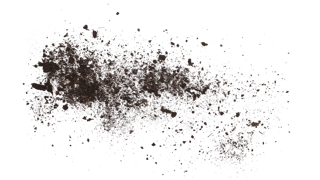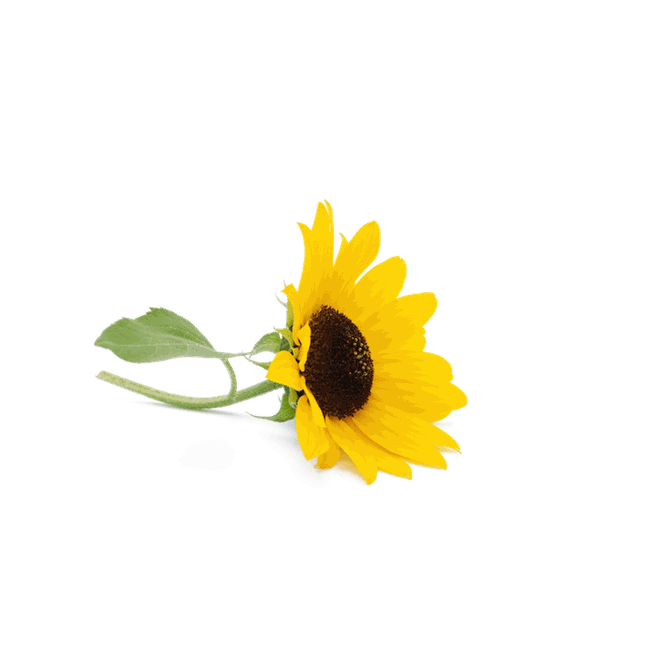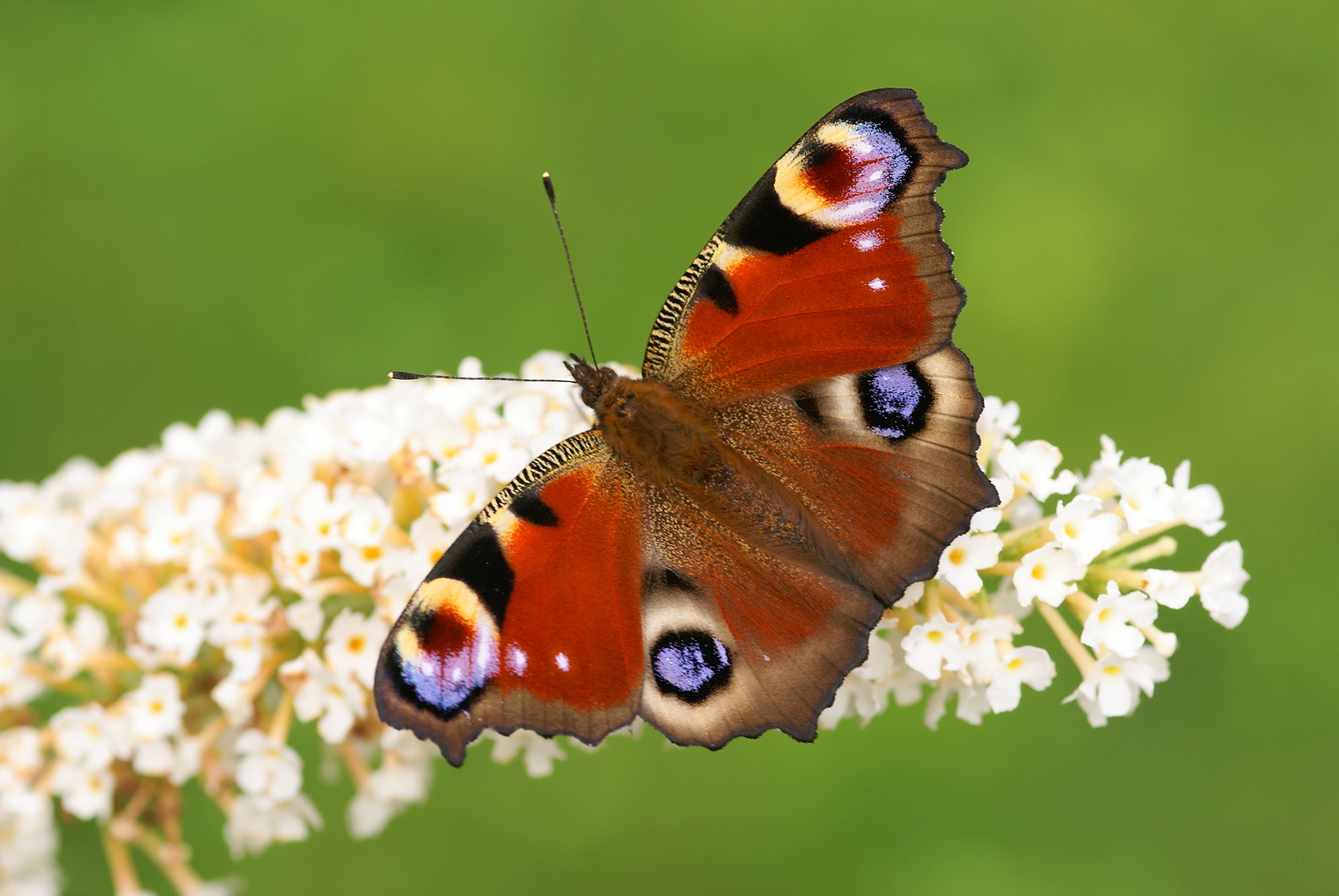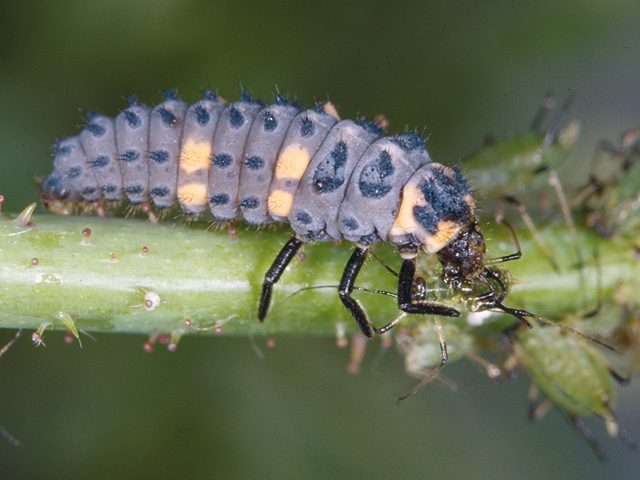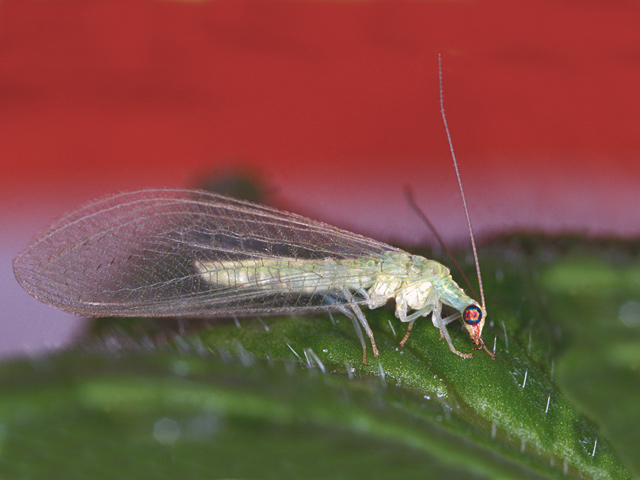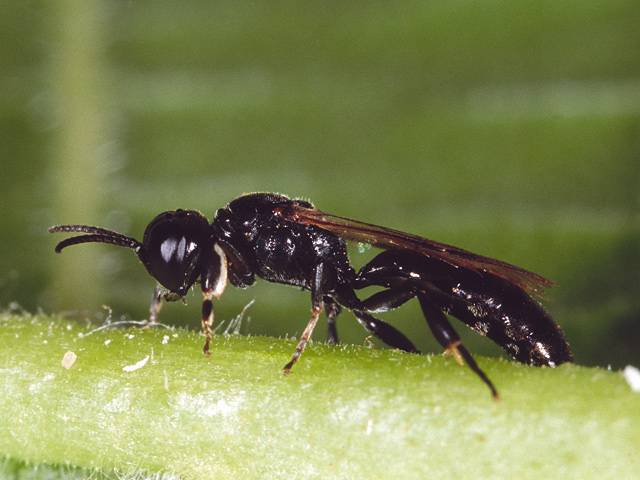Wild bees & other beneficials
Protecting plants – save bees!
Bees live in a dangerous environment. Many factors make their lives difficult. These include, the Varroa mite, which attach themselves to bees, and, unfortunately, some pesticides. Consequently, it is very important when using plant protection pesticides that they do not harm bees. Guidance on how to do this is always noted on our product packaging. At Neudorff we make sure that our products, when used properly, protect and conserve bees.
Bees in danger
For the last five years honey bee numbers have been on the decline. There are various causes that have not yet been clarified but it is clear that the following factors are causing harm to bees:
- Too little food, especially in autumn and winter, when there are not enough flowers available.
- The introduction of the Varroa mite from Asia. These mites feed on bees’ bodies and can eradicate whole hives once they establish a foothold.
- Some pesticides harm bees by causing them to lose their orientation and making them unable to return to their hive, therefore starving their larvae.
Good for Bees
Bees must find enough flowers that provide them with pollen and/or nectar. Unfortunately these flowers are often not available in domestic gardens. Therefore help the bees and plant bee-friendly species and varieties in your garden. The following plants are all good for bees: mallow, catmint, phacelia, tagetes, corn, sunflower, asters, dahlias, herbs anemone, crocus, sage, globe thistle. However, only the single headed flowers deliver the coveted bee food. Double flowers are worthless for flower visitors.
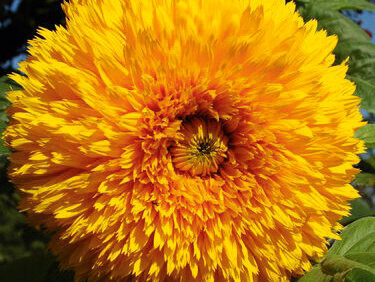
Helpful tips
- Carefully spray only the plants that require treatment.
- Do not spray during rainfall as the efficacy of the product will be reduced and reapplication will be required.
- Do not spray in windy conditions as this greatly increases the risk of drift onto non-target plants and creatures.
- Only treat plants at temperatures below 25°C.
- Dilute residues with water at a ratio of 1:10 and apply it to the previously treated areas.
- Rinse all equipment after use and dispose of the rinse water responsibly.
- For those who prefer an easier solution try a ready to use pre-mixed product.
- Store products in a dry, frost free environment.
Honey bees...
- Visit up to 750,000 flowers for 1 kg of honey
- Pollinate 80% of our plants
- Have eyes that are composed of 5,000 individual eyes
- Fly at speeds up to 20 mph
- Fly up to 53 miles daily
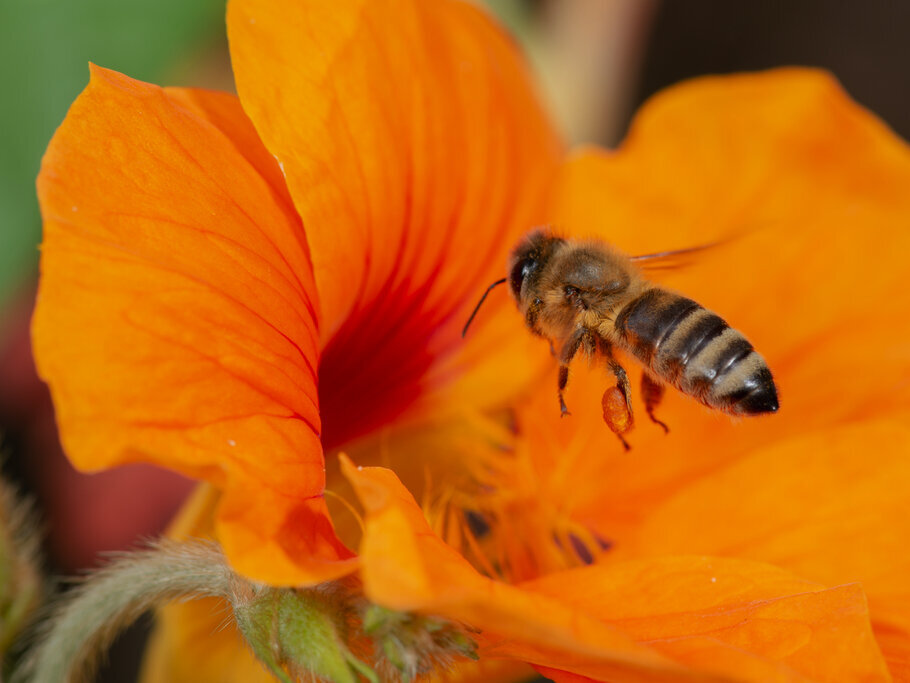
Hardworking bees
During the winter bees survive as a colony with their queen. However, there is no brood during this time. They form a winter cluster and warm each other by tiny muscle movements. Once the first warm days of spring arrive the bees are active again, and the queen recommences laying eggs. To supply the egg-laying queen and the brood, the bees travel tirelessly and collect pollen and nectar from flowers. This pollen is transferred unintentionally to the pistils of other plants and pollination takes place. Most of their nectar they give back to the hive. To make it in to honey bees consume and regurgitate it several times which thickens the honey and makes it durable. Therefore honey is practically predigested and as a result its energy is released rapidly into the blood when consumed by humans. To carry the powdery pollen into the hive, the workers take honey from the floor of the hive to act as a ‘glue’ for the pollen to stick to. They then gather clumps of pollen and paste it onto their legs which have special depressions to allow for the ‘pollen loads’ to be carried.
Wild bees
Even wild bees are industrious pollinators. They are not communal like honey bees, but usually live alone - laying their eggs into hollow plant stems, bark crevices or in insect hotels.
Insect Hotel
An insect hotel is a great way to make visitors feel more welcome in your garden: wild bees find a cozy home and will be joined by butterflies and ladybirds seeking a place for winter hibernation. Read more about the fascinating life of these busy garden helpers in this guide.
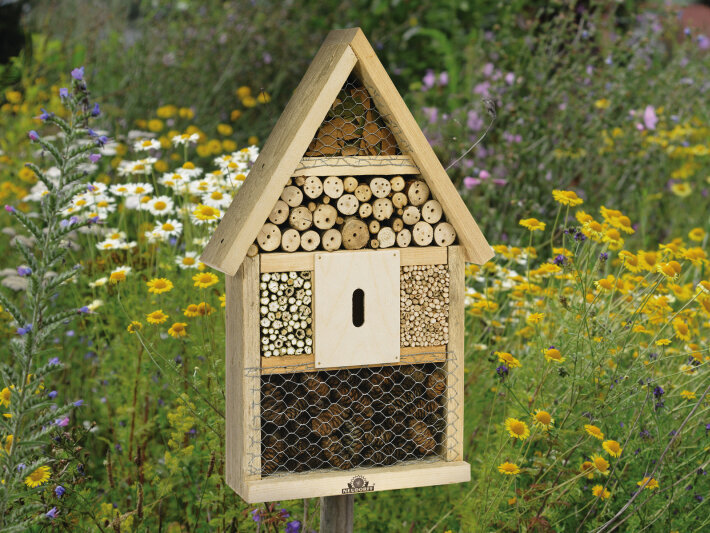
How insects help us
Insects are, like many other animals and plants, essential for maintaining the ecological balance in nature. Wild bees’ contribute by pollinating of our fruit trees, the importance of which is often underestimated - a single mason bee can pollinate as many blossoms as 80 to 300 honey bees! (shown by studies on apple and plum trees) With their pollinating activities, wild bees ensure the harvest of apples, strawberries and many other fruits. Without this pollination, not a single fruit could develop. Wild bees are increasingly important as there are less and less beekeepers and thus less and less honey bees. Therefore, the protection of wild bees is not only for the environment’s sake, but also for the benefit of all gardeners!
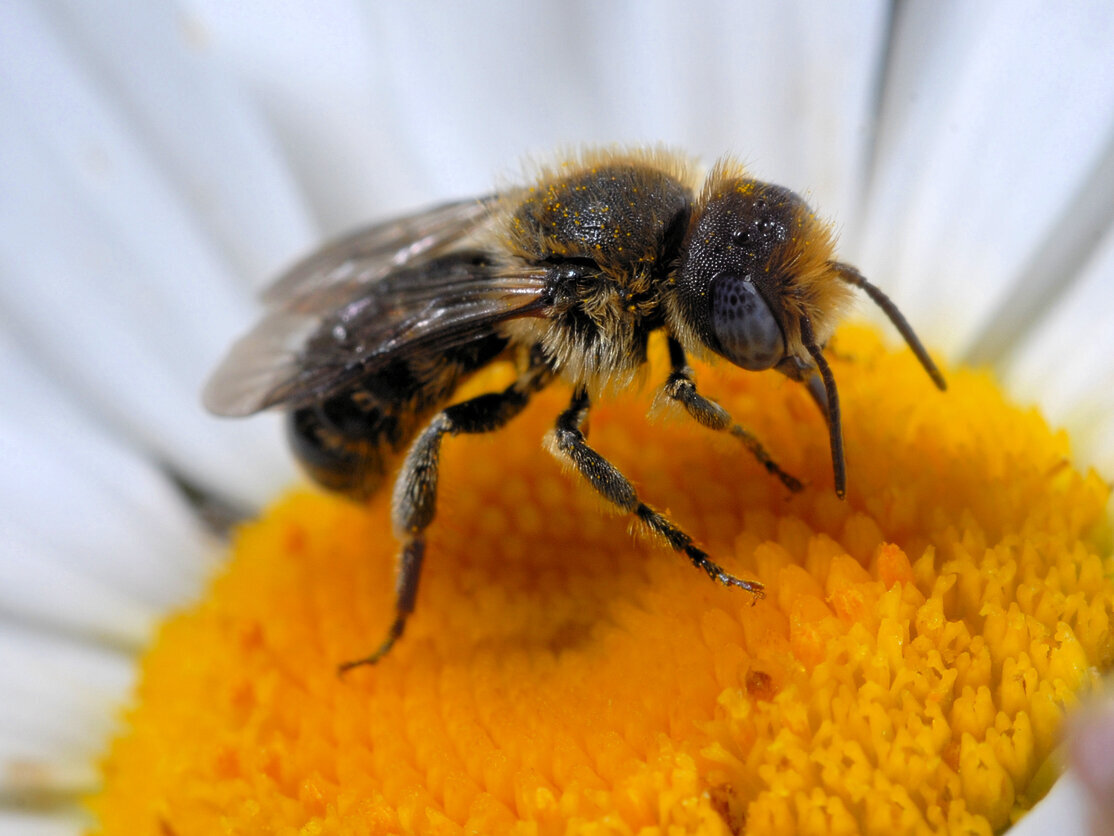
No need to be afraid!
Wild bees have a sting, but it is far too weak to penetrate human skin. In actual fact, the insects are very friendly, so that they can be observed in the garden quite safely.
Beneficial insects like ladybirds, green lacewings, and earwigs fight many pests in the garden. They feed on aphids and other small insects. By doing so, they contribute to biological plant protection and ensure that you need to use pesticides much less frequently, thereby reducing your gardens impact on the environment even further.
Protecting insects means protecting nature
In an untouched natural environment insects don’t need any aid for subsistence but in today's highly modified, cultivated landscape, and also in many gardens, beneficial insects find very little shelter. Many gardens are manicured and dead trees and branches that provide the necessary shelter for beneficial insects are becoming hard to find. In autumn many gardeners rake the leaves from the beds and leave the soil without any cover during the winter. This means certain death for ladybirds and other insects as they usually survive winter under leaves and in other safe hideaways.
In an insect hotel, many beneficial insects like ladybirds and green lacewings find shelter and nesting sites. Therefore by hanging up an insect hotel you are making a valuable contribution to the protection of nature.
At the same time the residents of the insect hotel help you with biological plant protection by devouring aphids and other pests.
And finally, the hotel gives you the great opportunity to watch the insects with your children or grandchildren. There’s no risk as the wild bees don’t sting. You can watch the wild bees inhabit the holes, take food into them and finally close the openings. This is more exciting than many TV shows!
For the additional protection of insects, we have an important request: please don’t tidy up your garden too much and instead help insects find shelter in amongst the undergrowth. Where insects feel at ease, larger animals like birds, hedgehogs, shrews and other garden inhabitants will also like to stay. Turn your garden into a little biotope - even the smallest space can help many animals and ensure the natural diversity of our flora and fauna.
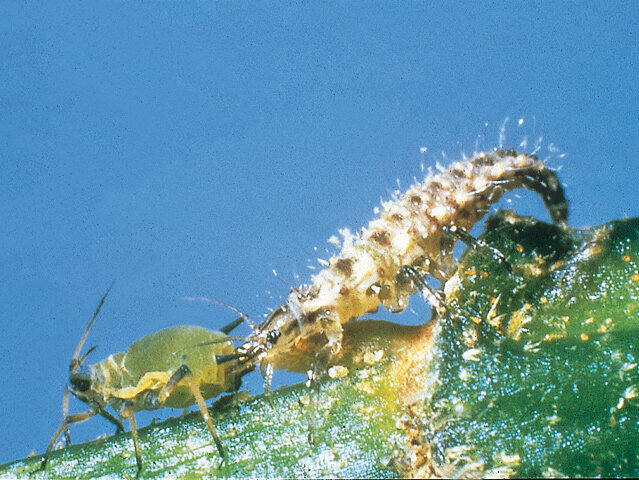
The right location
The insect hotel should be hung up in a sunny place that is sheltered from wind and rain, preferably facing a southerly direction (SW, S, SE), between 1 to 2 m from the ground, as a minimum it should sit above surrounding vegetation. It can be fixed on the wall of a house or garage, a fence or a tree post. Ideally, there should be nectar and pollen rich plants located near the insect hotel.
Even on the 5th floor of a high-rise city building wild bees and other beneficial insects can settle in the insect hotel.
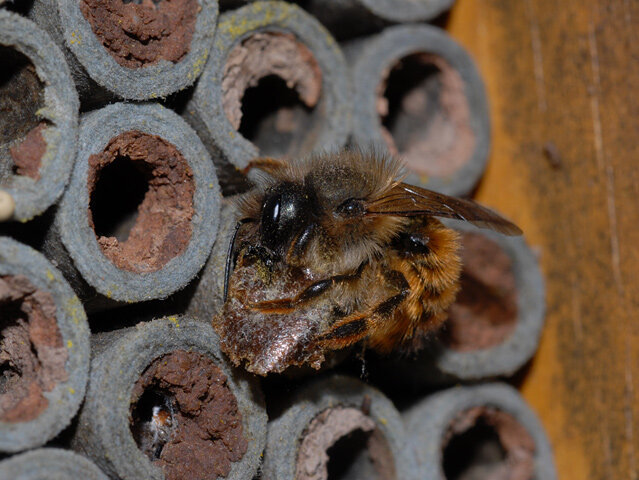
Way of life
The wild bee Osmia Rufa, which is very common, likes to nest in cavities and settles in the drilled pieces of wood and plant stems with a diameter of about 6 mm in the insect hotel. Other, smaller wild bees share the hollow plant stems of a smaller diameter with digger wasps like face-masked bees (Hylaeus species) or scissor bees (Chelostoma species).
Red Mason Bee
In our latitudes, the Red Mason Bee can often be encountered. It hibernates as an adult animal in hollow plant stems or other openings. From March to June, the wild bees leave their hibernation sites to mate. The females then look for a suitable hiding place to lay their eggs, like for example a hollow reed. Inside it, she builds a back wall made of mud and saliva. In front of it, she stores pollen and nectar, the food for the wild bee larva that will soon live there. Once this brood cell is sufficiently filled, she lays an egg onto this food padding and seals this first brood cell with clay and saliva. She continues like this and is able to build up to 10 brood cells in a row. For the construction of a single brood cell, the appropriate storage of food and the oviposition, the female needs about a whole day!
A fascinating thing about this method of laying eggs is, among other things, that the Red Mason Bee fills the first rearward cells with fertilised eggs from which females will develop as they need a longer time for their development and therefore hatch later. From the unfertilised eggs that have been laid in front, males will hatch which develop quicker and therefore hatch earlier.
One or two weeks after oviposition, the larvae hatch from the eggs and feed on the food supply in their cell for two to three weeks. During this time they shed their skin several times. Then they spin themselves a cocoon in which they transform into a pupa. In late summer, the adult insects hatch and hibernate in the insect hotel until the following March.
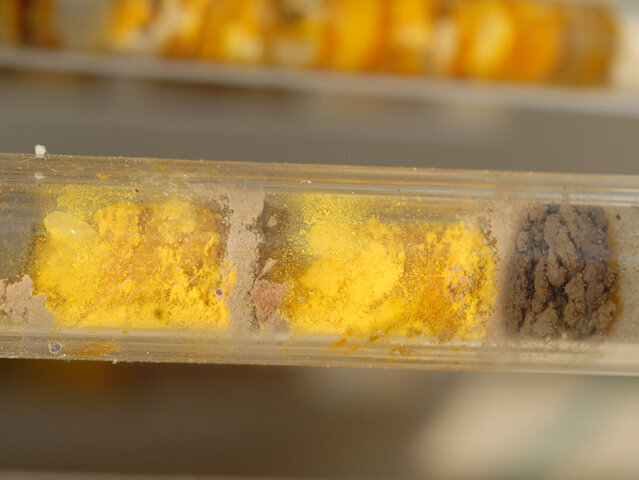
Help for wild bees
Wild bees need, like many other animals, a diverse landscape as a habitat. This is where wild bees like to find nesting sites:
- dead branches and trees in which they inhabit the old burrows of other insects
- dry grassland areas
- clay compartments of half-timbered houses
- houses with roofs covered with reed and straw
- open gravel and sand terrains
- gravel and clay pits
Nowadays, spaces like these are hard to find – but everybody can do something to help wild bees find more nesting and hiding places again.
This is what you can do for wild bees in your garden with little effort:
- Provide at least one insect hotel in your garden.
- Leave dead trees and shrubs in your garden.
- Take old tree trunks into your garden in which wood-inhabiting insects can nest.
- A dry stone wall with its numerous crevices offers many great nesting opportunities.
- Plant appropriate feeding plants (see table).
- Only use plant protection products that disturb nature as little as possible (e.g. from Neudorff).
- Don’t cut back perennials in autumn, but only in spring, when the first new growth can be seen.
- Mix soil with sand and / or gravel in a small, sunny spot in your garden for ground-dwelling insects to find a suitable habitat.
- Preserve old clay walls.
- Leave sand and gravel surfaces open for the ground-dwelling wild bees.
- Arrange any small rocks that you find in beds into stone piles.
- Build heaps of dead wood.
- Leave perennials in your garden over the winter. Not only will birds peck at the seed stands - in the hollow stems a lot of wild bees and other beneficial insects will hibernate.
Wild bees collect pollen and nectar from blossoms. But not every flower supplies pollen. There are many kinds that are completely worthless as food for insects. These are mainly double blooms, as here the stamens have been transformed into petals by intensive breeding. These double blooms, e.g. on dahlias, sunflowers or roses, often look impressive with their big and splendid flower heads, but they provide no pollen or nectar. Wild bees, butterflies or hoverflies will not find any food in them.
In addition, these double blooms can’t form any seeds. Birds in winter will also not benefit from these plants as they won’t find a single seed grain to eat on them.
Another big problem for many pollinators is the fact that in certain times of the year they don’t find any food at all. In spring and early summer, everything is in bloom. From crocuses, grape hyacinths to blooming fruit trees, there is food in abundance. But what is still in bloom during summer? Walk through your garden attentively – what blossoms can you find in July and August? With only a few flowering plants, you can help a lot of insects over the year.
Suitable feeding plants for wild bees
| Plants | Flowering season |
|---|---|
| autumn squill Scilla autumnalis | Sept. to Nov. |
| ballhead onionAllium sphaerocephalon | June to July |
| blue daisyJasione montana | June to Aug. |
| blueweedEchium vulgare | May to Aug. |
| buttercup anemoneAnemone ranunculoides | March to May |
| canary creeperTropaeolum peregrinum | June to Oct. |
| carawayCarum carvi | May to Aug. |
| christmas roseHelleborus niger | Dec. to March |
| coffeeweedCichorium intybus | June to Oct. |
| common bird's-foot trefoilLotus corniculatus | May to Oct. |
| common lavenderLavandula angustifolia | June to Aug. |
| common lungwortPulmonaria officinalis | March to April |
| common pasque flowerPulsatilla vulgaris | Feb. to April |
| common periwinkleVinca minor | March to June |
| common primrosePrimula vulgaris | Feb. to April |
| common toadflaxLinaria vulgaris | May to Oct. |
| eastern pasqueflowerPulsatilla patens | March to April |
| english marigoldCalendula officinalis | June to Dec. |
| feltwortVerbascum thapsus | July to Sept. |
| gentianGentiana germanica | May to Dec. |
| goat willowSalix caprea | March to May |
| grape hyacinthMuscari racemosum | April to June |
| harebellCampanula rotundifolia | June to Oct. |
| hollowrootCorydalis cava | March to May |
| hyssopHyssopus officinalis | July to Aug. |
| large pinkDianthus superbus | June to Oct. |
| lemon balmMelissa officinalis | June to July |
| lemon thymeThymus pulegioides | June to Oct. |
| meadow gageaGagea pratensis | March to April |
| muscari neglectumMuscari neglectum | March to May |
| new england asterAster novae-angliae | Sept. to Nov. |
| new york asterAster novi-belgii | Aug. to Nov. |
| oxlipPrimula elatior | March to May |
| proliferous pinkPetrorhagia prolifera | June to Oct. |
| saffron crocusCrocus sativus | Sept. to Nov. |
| sageSalvia officinalis | May to July |
| siberian squillScilla siberica | March to April |
| silver thistleCarlina acaulis | July to Sept. |
| smooth blue asterAster laevis | Aug. to Nov. |
| spring crocusCrocus albiflorus | March to May |
| spring crocusCrocus vernus | March to May |
| starflowerBorago officinalsis | May to Sept. |
| white stonecropSedum album | June to July |
| wild chivesAllium schoenoprasum | June |
| woodland sageSalvia nemorosa | June to Sept. |
| yarrowAchillea millefolium | June to Oct. |

